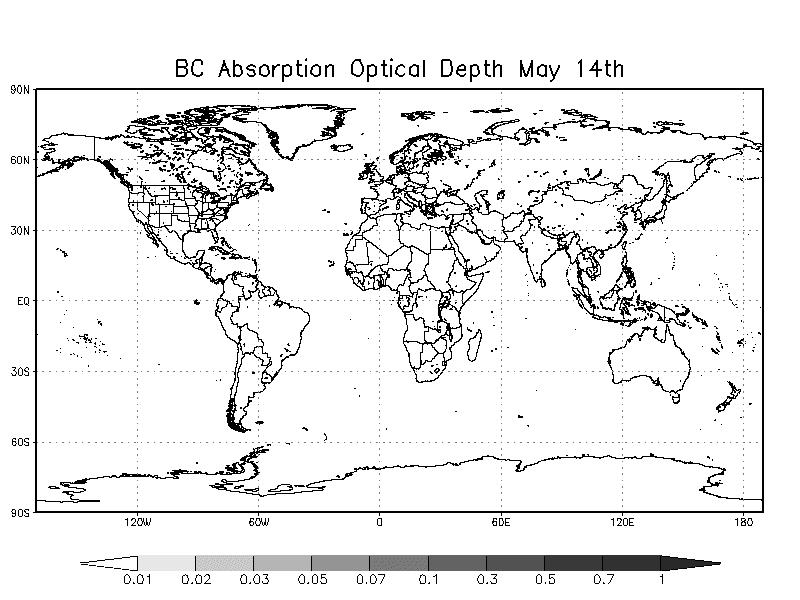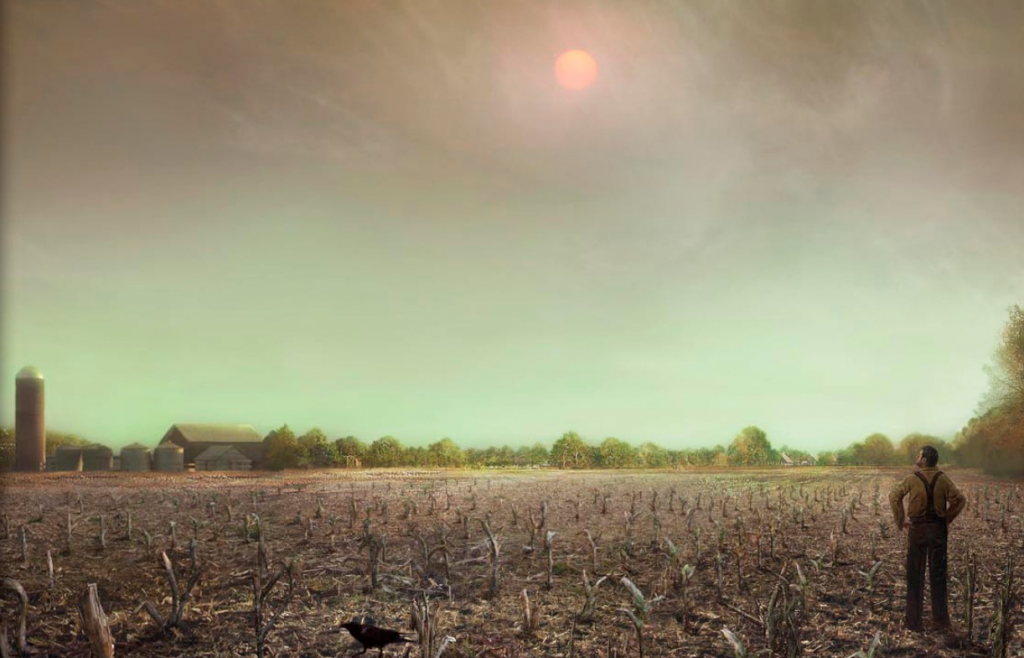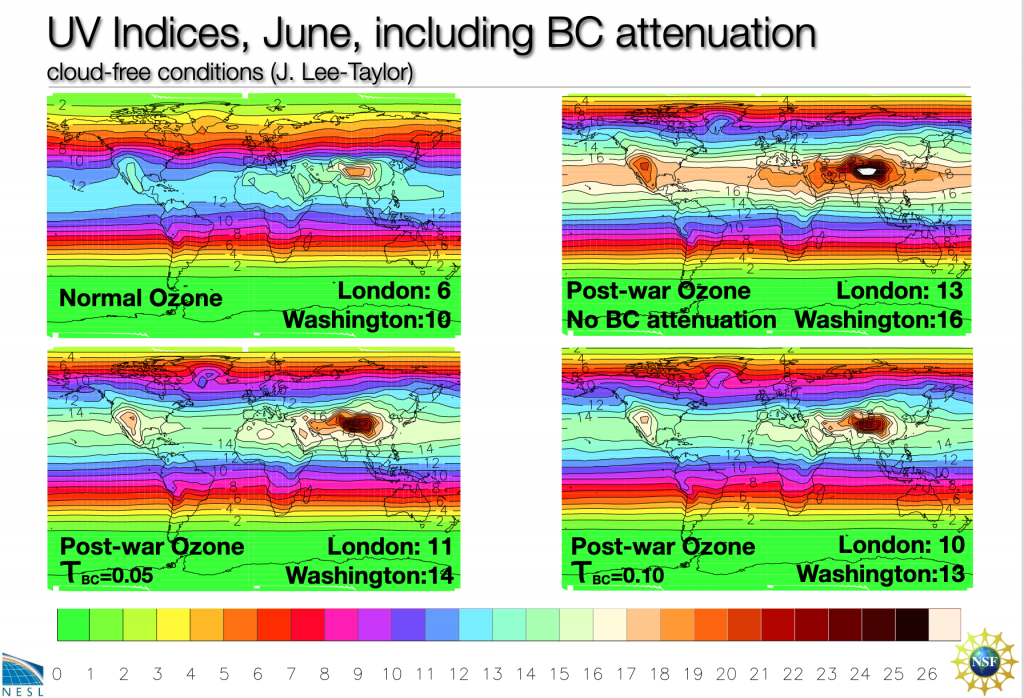A total of 100 atomic bombs (15-kiloton) detonated in the largest cities of India and Pakistan produce nuclear firestorms that cause 5 to 7 million tons of soot and smoke to rise above cloud level into the stratosphere.
In a few weeks, a global stratospheric smoke layer forms that blocks about 10% of sunlight from reaching the surface of the Earth. Loss of warming sunlight causes the coldest average temperatures in the last 1000 years in the Northern Hemisphere — twice as cold as the “Year Without Summer” in 1816, which saw frosts and snow every month of the year in the Northeastern U.S. and famine in Europe.
Both India and Pakistan currently (in 2024) have approximately 342 total weapons in their combined nuclear arsenals.

Nuclear firestorms ignited in the cities of India and Pakistan cause 5 million tons of smoke to rise above cloud level in the the stratosphere.
Should India and Pakistan fight a nuclear war in which each nation had 50 atomic bombs explode in their largest cities, scientist estimate that nuclear firestorm would produce 5 million tons of smoke that would quickly rise into the stratosphere and form a global stratospheric smoke layer. The smoke layer would block about 10% of sunlight from reaching Earth’s surface in the Northern Hemisphere; the blue skies we see now would turn grey. The loss of warming sunlight would cause average surface temperatures to become colder then those experienced during the Little Ice Age.
The smoke layer would remain for years, producing prolonged cold weather that would cause massive crop failures. Global grain reserves in 2021 were estimated to be equal to about a 4-months supply for world consumption. Grain exports from the exporting nations would cease. This would likely cause the 1 to 2 billion people already living near starvation to perish from (nuclear) famine.

The sun would heat the stratospheric smoke layer would to the boiling point of water, 212 degrees Fahrenheit (100°C). The heated smoke would cause a massive destruction of the stratospheric ozone layer that protects the Earth from dangerous ultraviolet UV-B light.
UV-B levels would increase to the point where a fair-skinned person in the southern US, who was outside in the mid-day sun at noon, would suffer a painful sunburn in 7 minutes. These levels of UV could cause blindness in many animals.

see https://www.cesm.ucar.edu/events/wg-meetings/2011/presentations/wawg/mills.pdf
The smoke layer would block 7% of sunlight from reaching the Earth’s surface. Loss of warming sunlight would create the coldest average temperatures experienced in the last 1000 years.
These temperatures would be twice as large as those which followed the largest volcanic eruption in the last 500 years, in 1816, which caused “The Year Without Summer”
- 100 nuclear explosions create massive firestorms in the cities of India and Pakistan.
- 5 million tons of smoke rises above cloud level into the stratosphere and forms a global smoke layer which will remain in place for 10 years.
- The smoke layer will block 7% to 10% of sunlight from reaching the
surface of the Earth. - Loss of warming sunlight creates the coldest average surface temperatures
on Earth in the last 1000 years. - Prolonged cold acts to reduce average precipitation by 40% to 50% in some areas.
- Sunlight heats the smoke in the stratosphere; the hot smoke destroys 25% to 45% of the protective ozone layer above the populated mid-latitudes and 50% to 70% of the ozone above
the northerly latitudes, allowing massive amounts of harmful UV light to
reach marine and terrestrial ecosystems. - The combined decreases in average temperature, precipitation, sunlight and
stratospheric ozone would act to significantly shorten growing seasons and
reduce agricultural production for several years. - Up to 2 billion people would die of starvation from nuclear famine
- Conditions would then slowly return to normal over a period of about a decade.